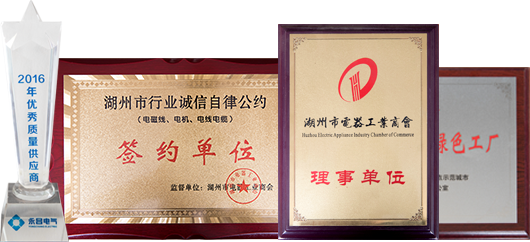EIW (QZYL) 180 CLASS Polyesterimide Enamelled Aluminum Winding Wire offers several key advantages when used in motor winding applications compared to other types of winding wires:
High Temperature Rating: One of the primary advantages of EIW (QZYL) 180 CLASS wire is its high-temperature rating. The "180 CLASS" designation indicates that this wire is designed to withstand continuous operation at temperatures of up to 180°C (356°F). This high thermal resistance is crucial in motor winding applications where elevated temperatures are common.
Excellent Thermal Stability: The Polyesterimide enamel insulation used in this wire is known for its excellent thermal stability. It can maintain its electrical and mechanical properties even at high temperatures, ensuring reliable motor performance.
Low Thermal Expansion: Aluminum conductors have lower thermal expansion compared to copper. This characteristic can be advantageous in motor winding because it helps maintain the integrity of the winding structure and reduces the risk of loosening or damage due to thermal cycling.
Lightweight: Aluminum is significantly lighter than copper. Using EIW (QZYL) Aluminum Wire can result in weight savings in motor applications. This can be particularly important in industries such as aerospace and automotive, where weight reduction is a critical factor for efficiency and performance.
Can you explain the significance of the 180 CLASS rating and how it affects the wire's performance in high-temperature environments?
The "180 CLASS" rating in EIW (QZYL) 180 CLASS Polyesterimide Enamelled Aluminum Winding Wire signifies a crucial aspect of its thermal performance and suitability for high-temperature environments. Here's an explanation of the significance of the 180 CLASS rating and how it affects the wire's performance:
Thermal Class Ratings: Thermal class ratings, often expressed in degrees Celsius (°C), are standardized classifications used to describe the maximum temperature that an insulating material can withstand over an extended period without significant degradation of its electrical and mechanical properties. These ratings help engineers and manufacturers select the right materials for applications with specific temperature requirements.
180 CLASS Rating: The "180 CLASS" rating indicates that EIW (QZYL) Polyesterimide Enamelled Aluminum Winding Wire is designed to operate continuously at a temperature of up to 180°C (356°F). This means that the wire's insulation, in this case, the Polyesterimide enamel, can withstand elevated temperatures without losing its key characteristics.
High-Temperature Performance: The significance of the 180 CLASS rating is that it allows the wire to perform reliably in applications where high temperatures are present. In motor winding applications, for example, where motors generate heat during operation, the wire's insulation must be capable of withstanding these elevated temperatures without degrading. This ensures the motor's long-term reliability and performance.
Improved Thermal Stability: The Polyesterimide insulation used in EIW (QZYL) 180 CLASS wire is known for its excellent thermal stability. Even when exposed to temperatures approaching the upper limit of its thermal class rating, the insulation remains robust, maintaining its electrical and mechanical properties.



